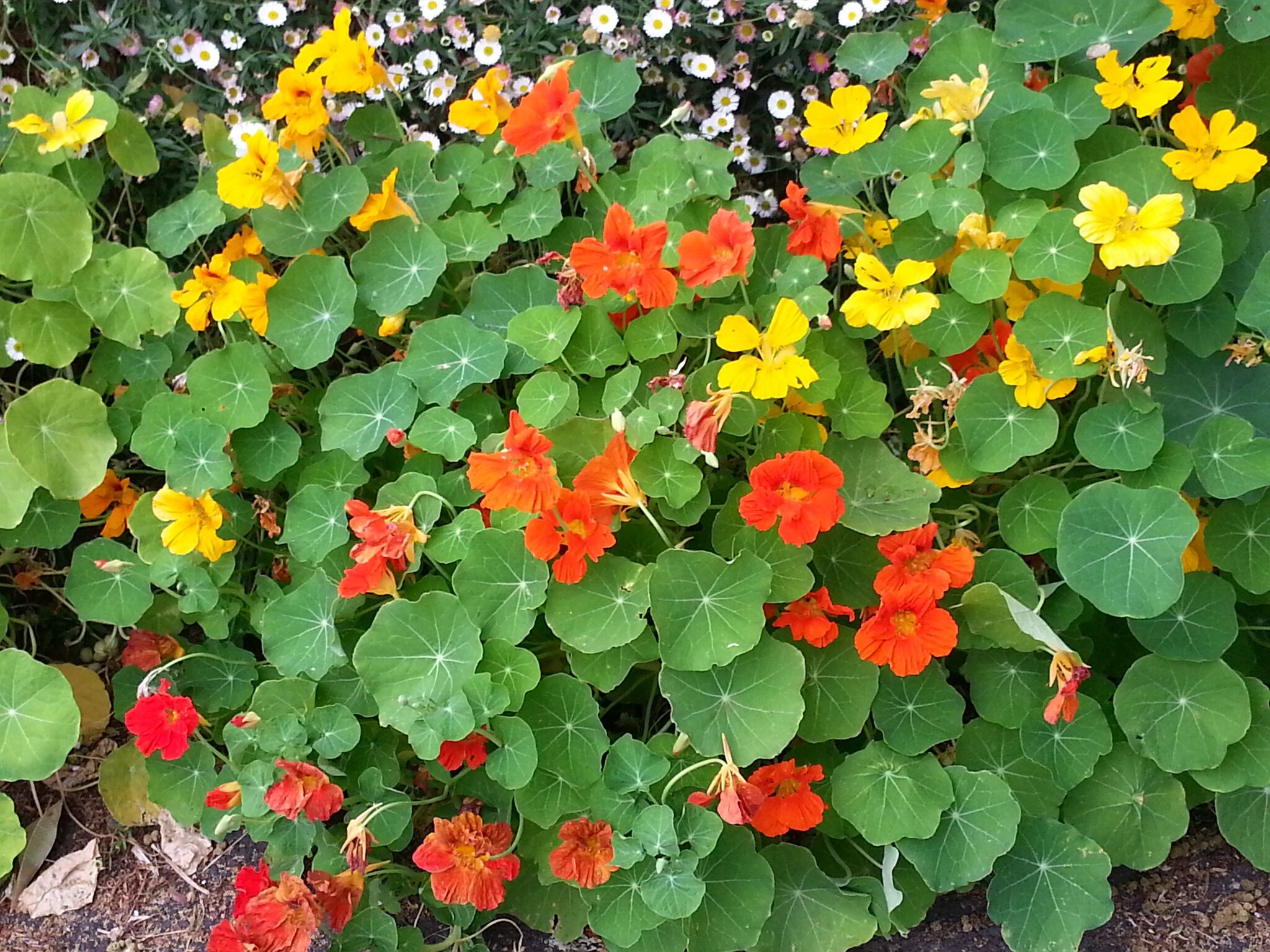
Greek tropaeum — trophy, especially of war, as the leaves look like shields and the flowers like ornamental helmets.
Annual or perennial, succulent, scrambling or climbing herbs, the perennial species tuberous. Leaves peltate with radiating veins, margin sometimes wavy, the stalks long and twining. Flowers solitary on hanging stalks. Sepals spurred. Petals usually 5 with upper 2 smaller, rarely 2, brightly coloured. Fruit splitting into 3 seeds.
Grown for the attractive spreading habit, leaves and colourful flowers. T. tuberosum Ruiz & Pav. from S America has yellow tuberous roots striped red or purple that are edible when boiled and mostly 5-lobed leaves. Flowers with sepals orange or red and petals orangeish; summer to autumn. T. tricolorum Sw. from Chile has small tubers and leaves with 5-7 lobes. Flowers colourful, with sepals reddish tipped black but sometimes blue, red or yellow with a green edge, the petals orange or yellow; late spring to summer.
Annuals from seed, perennials by division or splitting of the tubers.
Seed of T. majus may be pickled and used as a substitute for capers.
Commonly cultivated species with twining leaf stalks, acrid sap, peltate leaves.
86 species from S Mexico to Brazil and Patagonia.
Sparre & Andersson (1991).
Source: (2002). Tropaeolaceae. In: . Horticultural Flora of South-eastern Australia. Volume 4. Flowering plants. Dicotyledons. Part 3. The identification of garden and cultivated plants. University of New South Wales Press.
